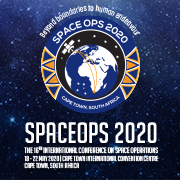›A Window to the Formation of the Milky Way
Dense stellar systems such as galactic nuclei and massive stellar clusters, like globular or starburst clusters are unique laboratories for astrophysics. The high stellar densities that are found in their centers are at least a million times higher than in the solar neighbourhood. Therefore, the interaction among stars plays a dominant role in the global evolution of such systems. These systems are the breeding grounds of stellar collisions and of tidal disruptions of stars. In galactic nuclei, such processes may contribute significantly to the mass of the central massive black-hole. Tidal disruptions trigger phases of bright accretion that may reveal the presence of a MBH in an otherwise quiescent, possibly very distant, galaxy, with important implications for extragalactic UV/X-ray astronomy. Also, the formation of compact object binaries is a very promising source of gravitational radiation for ground- and future space-based detectors. The complexity of these systems is such that, in spite of the huge theoretical and numerical efforts, there are still a large number of open key questions. Factors such as great distance, high extinction, extreme stellar crowding, or establishing an accurate astrometric reference frame can make observations of these targets extremely challenging. The precise astrometric observations that we will be able to make in the near future in our own galaxy of stars and their motions contain crucial information on the star formation history, the origin, and the evolution of the Milky Way, its nucleus and the globular clusters. Since most stars form in clusters, we can use observations of individual stars to constrain models of the building blocks of the stellar populations in galaxies. In order to develop a single narrative of the formation of galaxies such as the Milky Way and to understand the intricate dynamics of dense clusters, it is important for theorists, observers, and people working on astrophysical simulations to work together to develop strategies to piece together this picture.
Track this event on your Apple calendar













 United States
United States